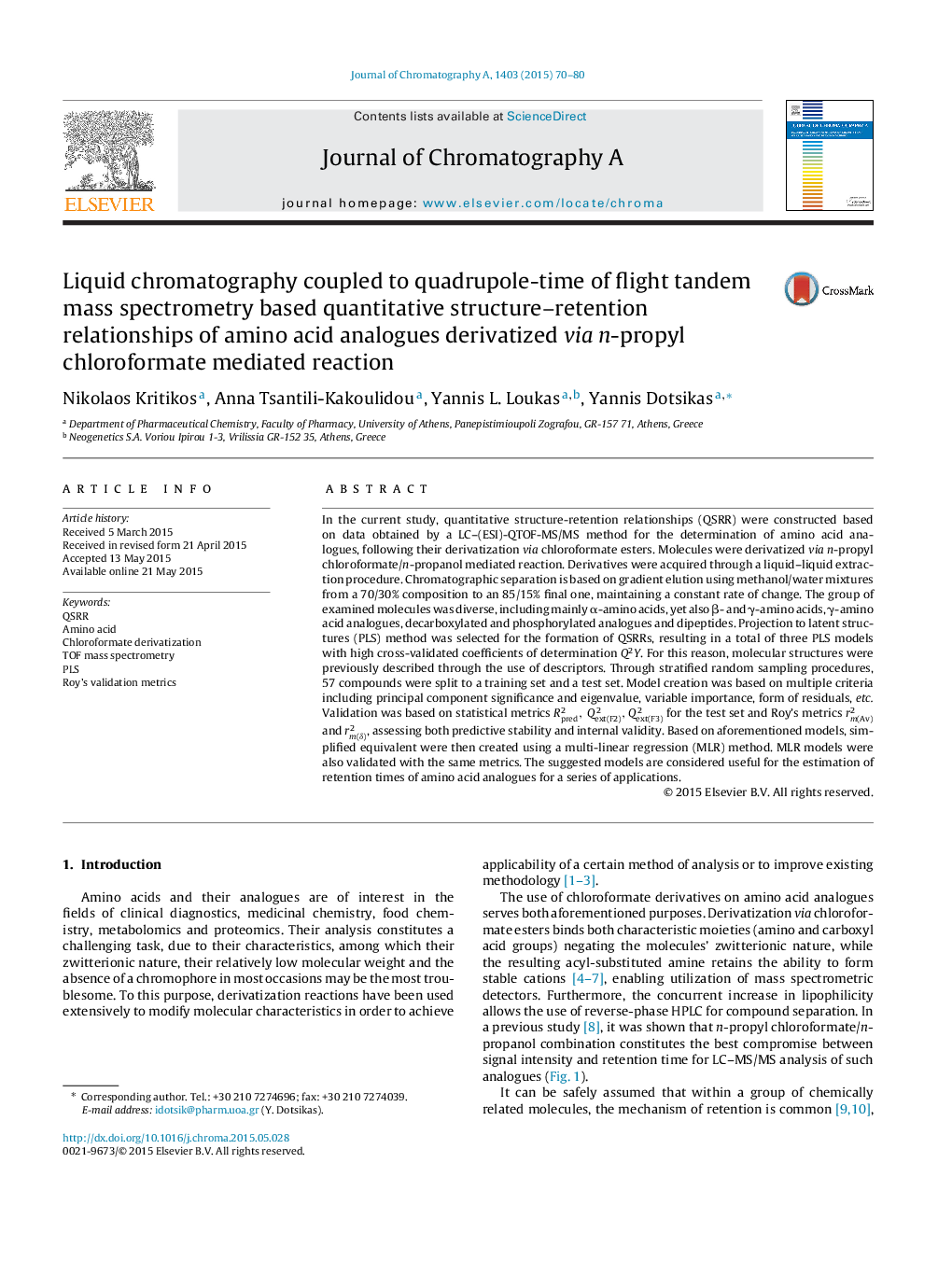| Article ID | Journal | Published Year | Pages | File Type |
|---|---|---|---|---|
| 1201329 | Journal of Chromatography A | 2015 | 11 Pages |
•Derivatization of amino acid analogues via n-propyl chloroformate/n-propanol.•Determination of multiple derivatives employing a (RP) HPLC-QTOF-MS/MS system.•PLS models for the prediction of chromatographic retention of amino acid analogues.•Extensive model validation, including application of Roy's metrics rm(Av)2 and rm(δ)2.•Construction of simplified MLR models based on selected PLS models and comparison.
In the current study, quantitative structure-retention relationships (QSRR) were constructed based on data obtained by a LC–(ESI)-QTOF-MS/MS method for the determination of amino acid analogues, following their derivatization via chloroformate esters. Molecules were derivatized via n-propyl chloroformate/n-propanol mediated reaction. Derivatives were acquired through a liquid–liquid extraction procedure. Chromatographic separation is based on gradient elution using methanol/water mixtures from a 70/30% composition to an 85/15% final one, maintaining a constant rate of change. The group of examined molecules was diverse, including mainly α-amino acids, yet also β- and γ-amino acids, γ-amino acid analogues, decarboxylated and phosphorylated analogues and dipeptides. Projection to latent structures (PLS) method was selected for the formation of QSRRs, resulting in a total of three PLS models with high cross-validated coefficients of determination Q2Y. For this reason, molecular structures were previously described through the use of descriptors. Through stratified random sampling procedures, 57 compounds were split to a training set and a test set. Model creation was based on multiple criteria including principal component significance and eigenvalue, variable importance, form of residuals, etc. Validation was based on statistical metrics Rpred2, QextF22,QextF32 for the test set and Roy's metrics rm(Av)2 and rm(δ)2, assessing both predictive stability and internal validity. Based on aforementioned models, simplified equivalent were then created using a multi-linear regression (MLR) method. MLR models were also validated with the same metrics. The suggested models are considered useful for the estimation of retention times of amino acid analogues for a series of applications.
